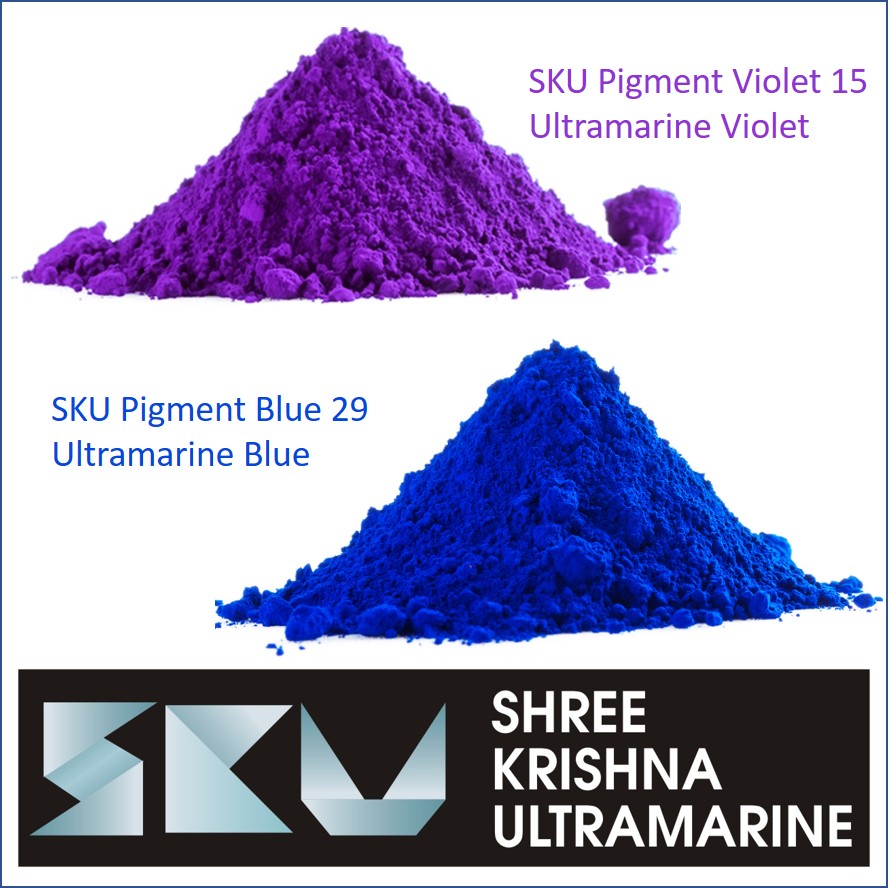How Pigment Violet can Save You Time and Help you Get to Know More About It.
Why Ultramarine Pigments Remain the World’s Most Trusted Blue

For generations, color has defined art, design, and industry. Among the most significant hues, Ultramarine remains unmatched for its timeless brilliance. Today, companies like SKU Pigments specialize in manufacturing high-quality Ultramarine pigments, including Ultramarine Blue, Ultramarine Violet, Pigment Blue 29, and Pigment Violet. From paints and plastics, Ultramarine has become the backbone of modern blue pigments.
Tracing Ultramarine from Lapis Lazuli to Industry
The name Ultramarine comes from the Latin “ultra mare,” meaning “beyond the sea,” a reference to lapis lazuli originally imported from Afghanistan. For centuries, it was the most expensive pigment, used by Renaissance masters to depict divine subjects. It symbolized wealth and divinity.
Modern chemistry made it possible to produce artificially Ultramarine pigments, bringing the once-exclusive shade into everyday use. This breakthrough turned a exclusive pigment into a cost-effective solution for countless sectors.
Why Ultramarine Blue Leads the Industry
Ultramarine Blue pigments—the synthetic form of Pigment Blue 29—are the most widely used. Known for their lasting vibrancy, they are sustainable and reliable. They are used in:
• Paints and coatings for long-lasting shades.
• Plastics and rubber, thanks to chemical safety.
• Inks and printing, where clarity is vital.
• Cosmetics, given their skin-safe quality.
This balance of performance and safety keeps Ultramarine Blue among the global color leaders.
Exploring the Subtlety of Ultramarine Violet
Ultramarine Violet offers delicate hues that appeal in cosmetics. Pigment Violet derived from Ultramarine is highly dispersible, making it ideal for children’s toys.
Its sophisticated tone enhances fine art, while ensuring stability without chemical breakdown.
How Pigment Blue 29 Powers Industries
Pigment Blue—particularly Ultramarine Blue pigments—remains a core pigment. It offers eco-friendly performance for:
• Automotive paints with brilliant sheen.
• Branding, ensuring long-term appeal.
• Construction materials, adding strength and aesthetics.
This multi-industry demand ensures Pigment Blue’s dominance.
Why Industries Prefer Ultramarine
• Non-Toxic & Safe: Certified safe for consumer goods.
• Heat & Light Resistant: Reliable even in high-heat industries.
• Eco-Friendly: Manufactured with sustainability.
• Cost-Effective: Economical mass use.
• Versatile: From fashion to infrastructure.
Where Ultramarine Pigments Shine
1. Paints & Coatings: Protective coatings.
2. Plastics & Rubber: Resistant to heat.
3. Cosmetics: Eyeshadow and nail polish.
4. Construction: Tiles and cement.
5. Printing & Inks: Sharp colors for publishing.
SKU Pigments: Global Ultramarine Experts
SKU Pigments leads the market, offering innovation in Ultramarine pigments. Their product portfolio includes:
• Pigment Blue 29 for vibrant, bold applications.
• Ultramarine Violet and Pigment Violet for elegance and subtlety.
• Custom shades for specialized markets.
Their reputation is built on consistent quality and sustainable methods.
Ultramarine: From Heritage to High-Tech
From lapis lazuli origins to the Ultramarine Violet backbone of blue pigments, Ultramarine has remained relevant for centuries. Whether it’s the timeless vibrancy of Ultramarine Blue, the subtle elegance of Ultramarine Violet, or the stability of Pigment Blue 29, Ultramarine pigments remain indispensable.
With SKU Pigments as a leading manufacturer, industries secure reliable pigment supply. As demand for non-toxic pigments rises, Ultramarine will lead in global markets.
FAQs
1. What is Ultramarine?
One of the world’s most trusted synthetic pigments.
2. What is Pigment Blue 29?
The standard code for Ultramarine in industries.
3. Where is Ultramarine Violet used?
In eco-friendly and children’s products.
4. Are Ultramarine pigments safe?
Certified safe for cosmetics and toys.
5. Why choose SKU Pigments?
Because of quality, eco-focus, and range.